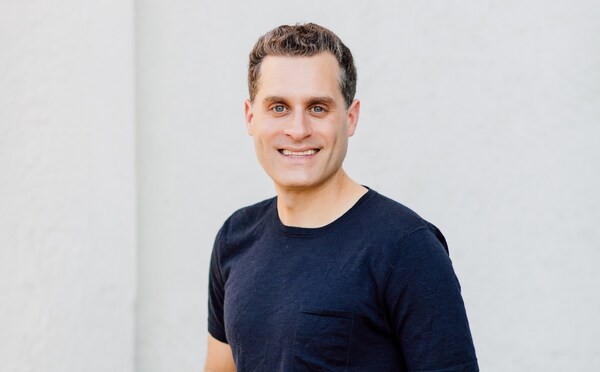Mergers and consolidations. If you’re looking to compile a list of the major business trends of the past five years, that one would definitely have to rank somewhere near the top.
Whether the industry in question is telecommunications, transportation or entertainment, the big seem to keep on getting bigger. And no one – regulators included – seems to know just how big is too big.
In the realm of specialty television, certainly, this whole issue has sparked considerable discussion and debate.
If CTV succeeds in its attempt to acquire NetStar Communications – the deal still awaits approval from the Canadian Radio-television and Telecommunications Commission – the broadcaster will add The Sports Network (TSN), Discovery Channel and Reseau des Sports to its stable of specialty channels, which already includes CTV Sportsnet, CTV Newsnet and Outdoor Life Network.
This comes on the heels of last year’s merger agreement between Alliance Communications Corporation and Atlantis Communications, which brought together four specialty services – Life Network, HGTV Canada, Showcase Television and History Television – under the broadcasting division of a single corporate owner: Alliance Atlantis Communications.
This is by no means the last word in consolidation of ownership, either. Indeed, industry watchers foresee many more such deals in specialty TV during the years to come.
‘No one specialty network can probably exist on its own these days,’ says Bruce Baumann, vice-president, media director with Toronto-based Ammirati Puris Lintas. ‘The only way to stay current is to have multiple entities under one corporate banner.’
Ultimately, it’s about ‘optimum utilization,’ Baumann says. When specialty services share equipment, infrastructure and behind-the-scenes personnel, the cost efficiencies for the broadcaster are considerable.
There are, however, concerns about what increased ownership consolidation means for advertisers and their agencies.
On the one hand, Baumann says, it works to the advantage of media buyers by reducing the number of individuals they need to deal with when executing plans in specialty TV.
If, on the other hand, broadcasters grow too large and powerful through consolidation, buyers could find themselves negotiating from a position of relative weakness. ‘We’ve had situations in the past where some broadcasters have gotten a little big for their britches,’ Baumann says.
Still, this may not be quite so grave a risk as it appears to be. Specialty programming options are now more abundant in Canada than ever. If an advertiser doesn’t feel like paying the rates that, for example, the Alliance Atlantis channels are charging…well, there are plenty of other places to shop. Nothing is a must-buy anymore.
‘We are reaching a time where there’s an abundance of signals out there, and therefore an abundance of choice for the advertiser,’ Baumann says. ‘This makes it difficult for any one player to be as dominant as they might have been [previously], or to charge exorbitant increases from year to year.’
The desire on the part of the major broadcasters to snap up ownership of specialty services is understandable, says Hugh Dow, president of Toronto-based Initiative Media. The future of television, it’s generally agreed, is in specialty. And besides, from a pure bottom-line perspective, these channels are attractive properties, given that they have two separate revenue streams: cable subscriptions and advertising.
For advertisers, he says, specialty offers opportunities for more creative use of media than traditional network television. And consolidation of ownership may add to those opportunities, by making it possible for an advertiser to buy across a broadcaster’s entire specialty portfolio.
While no one in the advertising community is exactly overjoyed to see broadcasters acquiring more clout, it should be noted that there is a counterbalancing trend – namely, consolidation of media management agencies.
‘Consolidated buyers are dealing with consolidated owners,’ Dow says. ‘The concern is that the playing field between the two stays level.’
Sunni Boot, president of Toronto-based Optimedia Canada, agrees. Whether a firm is in broadcasting or media buying, she says, consolidation is probably the only way to ensure survival anymore.
While concentration of ownership in specialty TV inevitably exerts upward pressure on pricing, Boot shares the view that this will be offset by the plethora of choice in the medium. But she does see other risks associated with consolidation, the most serious of which can be summed up in a single word: influence. As individual broadcasters gain control of more channels, growing in size and power, there is the danger that a single large player could exert undue influence in areas of collective industry concern, such as research and measurement.
‘You can become the architect of a policy that might not necessarily be in the best interest of the industry as a whole,’ she says.
Significant changes to the specialty ownership picture are almost certain to continue, Baumann predicts, as major broadcasters move to acquire established services or launch new ones of their own.
CanWest Global Communications, he says, is one player that can be expected to move into the specialty arena much more aggressively in the near future. ‘They have all the equipment and personnel and what they don’t have they can certainly hire.’
Specialty channels in general, he adds, will proliferate further – but not until the framework for digital distribution is fully in place.
Also in this report:
– It’s a harsh realm: In today’s network television environment, the chances of a show’s success are slimmer than ever p.TV2
– Spotlight on…Televion Creative p.TV18
– Specialties take branding to the Web: Treat online presence as destination in and of itself p.TV21
– Drop the Beat busts an interactive move: Alliance Atlantis hip-hop drama invites viewers to participate via Web site and interactive TV p.TV23



























